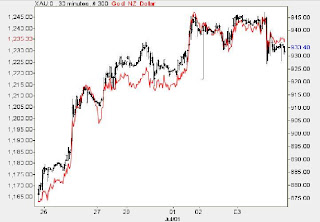
Gold is up at US$967 an ounce. As this article says a lot of this has been driven by demand in Asia.
Worldwide identifiable investment demand in gold has increased considerably in recent years. Since 2003 investment has represented the strongest source of growth in demand, with a year-on-year increase in value terms of 45 per cent by the end of 2006, and growth over the past five years of around 300 per cent. Gold investment attracted net inflows of approximately NZ$13bn in 2006.
In New Zealand we are seeing a huge increase in the interest in both gold and silver investments. Some investors want to protect their portfolio, others seek to move away from the ‘90s style portfolio focusing solely on equities, property or finance.
Others, as is the norm overseas, see gold as an insurance policy against future uncertainties.
In March this year, at New Zealand Mint we witnessed the renaissance in silver investment with a 300 per cent increase in silver bullion transactions and a continuation of demand not seen for many years.
